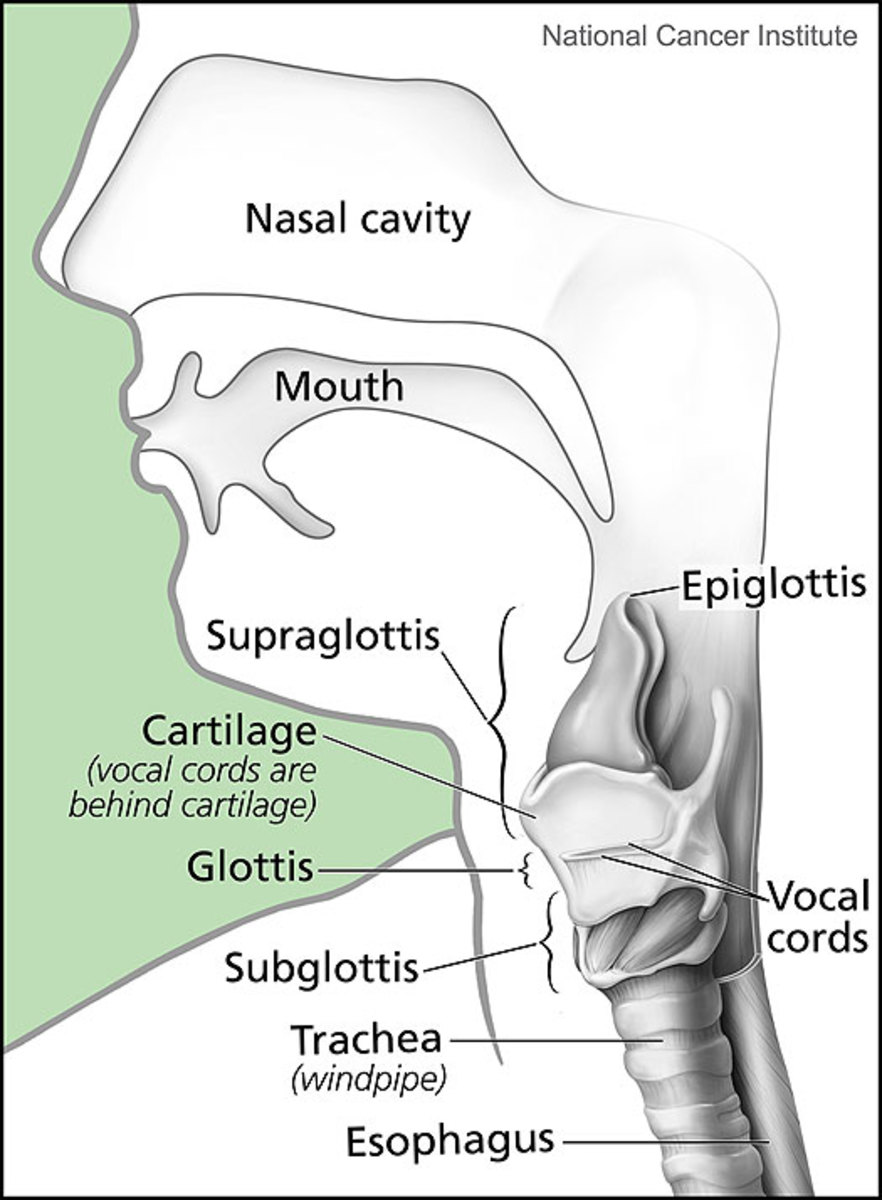Accessing the Head Voice in Singing
What is Head Voice?
Head voice is sometimes referred to as falsetto, though in fact it has resonance. There are certain resonance areas in your body when you sing. Your head is one of them, in addition to your nasal cavities, diaphragm, etc. Therefore, while both are high in pitch, head voice is powerful in a way that falsetto is not.
You access your head voice by singing from your diaphragm and pushing out the sound through through your upper mouth and into your nasal cavity a little. I enjoy it a lot because of the unique sensation. While singing, you can shift from a chest voice to a head voice as your rise in pitch; the head voice allows you to maintain a rich sound while hitting those exciting high notes.
Accessing Your Head Voice
When you’re accessing your head voice, you should not raise your larynx, or voice box. In males, the larynx forms the lump in the next known as the Adam's apple; in females, you can see if it is rising by looking at your throat.
Sing while looking in the mirror and notice if your larynx moves. An upward movement is a very common occurrence when singers are using wrong technique and it ends up hurting the throat. It happens frequently even with people who have been singing for a long time. So first things first. Try to master keeping your larynx still and don’t let it rise or lower while trying to access your head voice or while doing any other kind of singing.
Next, you want to focus on keeping your throat as open as possible as you find resonance in your head cavities (the pharynx, the oral cavity, and the nasal cavity). Singers sometimes have a tendency to close the throat as they sing higher notes. This closes off your head voice; instead, you should always keep the throat as open as possible, even when rising in pitch. To "open the throat," you are really opening up the soft palate at the back of the throat to allow more air out as you sing. It’s much much easier to hit high notes or low notes while your throat is open, and opening your throat also creates resonance in your head. This is how you access head voice.
Keeping a Low Larynx
Head Voice Versus Chest Voice
There are different registers in singing. Some singing coaches say that there are two registers: the chest register and the head register. Lower pitches are sung in the chest register, while higher pitches are sung in the head register. When you think about it, this makes sense, because when you sing very low, you naturally feel like you are singing from down in the belly. These registers differ not only in pitch, but also in tonal quality, because they use different parts of the body as resonators. The pharynx is a passageway that connects the nasal cavity and larynx, and all of these body parts resonate as you sing from your head voice.
This is pretty in-depth, but don’t let it intimidate you. Just try to sing the note the way it should sound. You will start noticing that you use your head voice a little more for certain notes and then later you can develop that head voice more. In order to improve as a singer, it is always good to develop an awareness of what your body is doing and how it feels while you sing.
Head Voice Video
Head Voice Exercise
Your head voice should have the same resonant sound as your chest voice—the resonance is simply coming from a different part of your body.
To practice this, use this exercise to train your head voice. Start by singing your arpeggios within chest voice range. Sing "nah" for each note. After completing each arpeggio, shift up one note. Focus on keeping your larynx stationary and your throat open. If you need help doing so, try moving your throat as if to prepare for a yawn between each arpeggio.
As your arpeggios move upward in pitch, focus on keeping the same tone throughout. You will find that by keeping your larynx down and your throat open, the resonance in your chest will move to your head as you rise in pitch.







